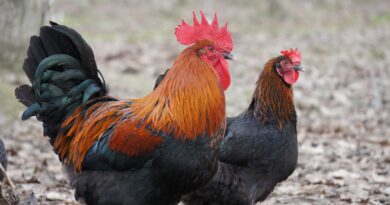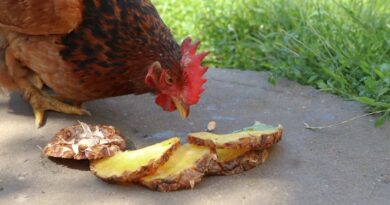Complete Guide to Lavender Orpington: Care, Benefits, and Breeding Tips
Lavender OrpingtonThe Lavender Orpington chicken is a popular breed among poultry enthusiasts for its stunning lavender-colored plumage, friendly demeanor, and productive capabilities. This comprehensive guide will walk you through everything you need to know about caring for, understanding the benefits of, and successfully breeding these beautiful birds.
Introduction to Lavender Orpington Chickens
Lavender Orpingtons belong to the Orpington breed, originally developed in the late 19th century in Orpington, Kent, England. Known for their dual-purpose nature, they serve as excellent layers and meat producers. However, the Lavender Orpington stands out primarily for its unique plumage, making it a favorite in backyard flocks and poultry shows.
Care for Lavender Orpington Chickens
Caring for Lavender Orpington chickens involves understanding their basic needs for health, happiness, and productivity.
1. Housing Requirements
Lavender Orpingtons are hardy birds, but they thrive best in a safe, clean, and spacious environment.
- Coop Space: Provide at least 4 square feet per bird inside the coop to ensure ample space for movement.
- Run Area: Include a secure outdoor run with a minimum of 10 square feet per chicken.
Perches and Nesting Boxes: Install perches for roosting and 1 nesting box for every 3 to 4 hens. - Ventilation: Ensure the coop has proper ventilation to prevent moisture buildup and respiratory issues.
- Predator Protection: Use predator-proof locks and secure wire mesh to keep predators at bay.
2. Feeding Lavender Orpingtons
Proper nutrition is key to keeping your chickens healthy and productive.
- Starter Feed: Chicks should be fed a starter feed with at least 18–20% protein until 6 weeks old.
- Grower Feed: From 7 to 18 weeks, switch to grower feed with 16–18% protein.
- Layer Feed: Adult hens need layer feed with 16% protein and added calcium for strong eggshells.
- Treats and Supplements: Offer treats like fruits, vegetables, and mealworms in moderation. Provide grit and oyster shells for digestion and calcium needs.
3. Watering Needs
Fresh, clean water should always be available. Lavender Orpingtons, like all chickens, need consistent hydration to stay healthy and lay eggs regularly. Use heated waterers in winter to prevent freezing.
4. Health Maintenance
Regular checks and preventive measures can keep your flock in top condition.
- Vaccinations: Vaccinate against common diseases like Marek’s Disease.
- Parasite Control: Inspect for lice, mites, and worms regularly and treat with appropriate poultry-safe products.
- Dust Baths: Provide areas for dust baths to help them keep their feathers clean and parasite-free.
Benefits of Raising Lavender Orpingtons
Lavender Orpington chickens offer numerous benefits that make them an ideal choice for backyard flocks.
1. Egg Production
Lavender Orpingtons are reliable layers, producing around 180–200 medium to large brown eggs annually. Their consistent laying pattern ensures a steady supply of fresh eggs for your household.
2. Friendly Temperament
This breed is known for its calm and friendly nature, making it a perfect choice for families with children or for those new to raising chickens. They easily adapt to being handled and often develop bonds with their owners.
3. Aesthetic Appeal
The lavender-colored plumage is truly unique and adds an ornamental value to your flock. Their beautiful appearance often makes them the star attraction of any coop.
4. Dual-Purpose Utility
In addition to egg-laying, Lavender Orpingtons are excellent meat birds due to their large size and flavorful meat. This makes them an ideal breed for those seeking self-sustainability.
5. Cold Hardiness
With their dense feathers, Lavender Orpingtons are well-suited for colder climates, provided they have adequate shelter and protection from drafts.
Breeding Tips for Lavender Orpington Chickens
Breeding Lavender Orpingtons can be a rewarding endeavor, especially for those aiming to maintain or expand their flock. Here’s how to do it effectively:
1. Selecting Breeding Stock
Choose healthy birds with desirable traits to produce high-quality offspring.
- Physical Characteristics: Look for vibrant lavender plumage, bright eyes, and a strong, upright posture.
- Health and Productivity: Select chickens with a history of good egg production, strong immunity, and active behavior.
2. Maintaining Genetic Purity
Lavender Orpingtons carry a recessive gene responsible for their lavender coloration. When breeding, ensure both the rooster and hen are Lavender Orpingtons to maintain the color purity in the offspring.
3. Incubation and Hatching
Eggs can be hatched using a broody hen or an incubator.
- Broody Hen: Lavender Orpingtons are naturally good mothers and often go broody, making them ideal for natural hatching.
- Incubator Settings: Maintain a temperature of 99.5°F and 50–55% humidity for the first 18 days, increasing humidity to 65–70% for the final three days.
4. Raising Chicks
Once hatched, chicks require special care to thrive.
- Brooder Setup: Prepare a warm, clean brooder with a heat lamp providing 95°F for the first week, decreasing by 5°F weekly.
- Starter Feed and Water: Provide chick starter feed and clean water in shallow dishes to prevent drowning.
Common Challenges with Lavender Orpingtons
Raising Lavender Orpingtons is generally straightforward, but there are some challenges to be aware of:
1. Broodiness
While broodiness can be beneficial for hatching eggs, it may interfere with consistent egg production. To break broodiness, isolate the hen in a cool, well-lit space for a few days.
2. Predators
Their friendly and curious nature can make Lavender Orpingtons more vulnerable to predators. Always supervise free-range time and ensure your coop is secure.
3. Feather Pecking
Lavender Orpingtons are generally peaceful, but overcrowding or stress can lead to feather pecking. Provide ample space and entertainment to prevent boredom.
Lavender Orpington vs. Other Orpington Varieties
Lavender Orpingtons share similarities with other Orpington varieties, such as Buff Orpingtons, Black Orpingtons, and Blue Orpingtons. However, their lavender coloration sets them apart. They also tend to be slightly less prolific layers compared to Buff Orpingtons but make up for it with their unique aesthetic and gentle nature.
Tips for Keeping Lavender Orpingtons Happy
To ensure your Lavender Orpingtons live a fulfilling life, consider the following tips:
- Provide Enrichment: Offer toys, perches, and dust bath areas to keep them entertained.
- Regular Interaction: Spend time with your chickens daily to foster trust and reduce stress.
- Seasonal Care: Adjust feeding and housing needs according to the season, especially during extreme weather conditions.
Conclusion
Lavender Orpington chickens are a wonderful addition to any backyard flock. Their unique lavender plumage, friendly nature, and dual-purpose utility make them a favorite among poultry keepers. With proper care, you can enjoy their companionship, fresh eggs, and even embark on breeding ventures to expand your flock. Whether you’re a novice or an experienced chicken keeper, Lavender Orpingtons are sure to enhance your poultry-raising experience.




